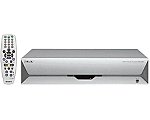Television

Black & White TV
Color TV
High Definition TV
TV Displays
Cable TV
Satellite TV
Introduction
Television ranks among the greatest inventions in human history. The
technology of TV has completely and irrevocably changed the human
race.
As radio sends sound over the air, (AM, FM radio for example) television
sends pictures (as well as sound) over the air.
It took years for a single TV broadcast standard to be
adopted by the Federal Communications Commission (FCC). The National
Television Standards Committee (NTSC) was formed in 1940 by the FCC
and was comprised of dozens of companies with stakes in the battle
to come up with a single set of standards. On July 1, 1941, the
first NTSC standard television pictures were broadcast.
Color TV
By December 1953, the FCC approved the all-electronic NTSC color system proposed by RCA that
has been the analog standard for over 50 years.
HDTV - High Definition
Digital TV started becoming popular around 1998 with new TV
displays and new transmission signals which required many changes
both for the consumer and the television providers. High
Definition TV requires a receiver capable of decoding the digital
signal and a TV capable of displaying the high-content, wide-screen
programming.
A gradual implementation over the years beginning in the 21st
century, with both old analog and new digital television
transmissions, will give consumers time to transfer over to the
digital era. The FCC has set target dates for television providers
to de-allocate old analog facilities and then continue with only
digital signals.
Consumers can then continue to watch television with their old
sets, but if they choose to do so, will have to convert the
digital transmissions into an analog signal recognizable by their
old TV set. Of course, the old TV set will not have the capability
to receive High-Definition programming.
DTV and HDTV programming is currently available OTA (over-the-air)
from local TV stations as well as satellite providers. Consumers
willing to purchase a new television for the digital era will find
a host of new technology displays including Liquid Crystal
Displays (LCD), Plasma Display Panels (PDP), and many others available in
sizes from tabletop 17 inch to 50, 60 inches and even bigger
screen sizes. Many of these can be hung on a wall and when
combined with a Home Theater setup (part of the new digital TV
signals include surround sound) can create a much fuller
environment for the consumer than ever was possible with analog
television.
TV Buying Guide
Hookup
Diagrams |
|
 |
|
Video

Videotape
Video Cassette Recorders
Video Cameras
Video Disc
Video Disc Players
Video Disc Recorders
Video Hard Disk Recorders
Introduction
In April 1956, the first black-and-white
videotape recording was introduced.
During the next 20 years, several companies including RCA and
Sony attempted to bring some kind of video recording system
into consumers homes, but consumers were resistant to reel-to-reel and
film-based solutions. If video recording was to become a home
device, it would have to be simple and convenient – a
cassette, for instance.
The idea of a videocassette first was proposed by a Sony engineer, in 1964, after seeing Philips'
audiocassette. But the question was whether consumers were
interested in recording TV programs.
It was clear by the mid-1970s that videocassettes made the
most sense. But there were two companies perfecting
non-compatible videocassette formats: Sony, with its Beta
system, and JVC, with its Video Home System, (VHS).
In February 1976, Sony introduced the first Betamax VCR in
the United States.
Nearly two years after the Betamax was introduced, in October
1977, RCA unveiled its Matsushita-made VHS VCR.
The machine improved on the Sony Betamax by offering not only
two-hour recording (the Sony could record for only an hour)
but four-hour recording as well. RCA executives told
Matsushita engineers that this longer speed was required to
enable Americans to record an entire football game.
In six months, the VCR format war was practically over. Sales
of VHS machines caught and passed Beta as the video-recording
format of choice. By the summer of 1979, VHS was outselling
Beta by a margin of two to one.
But some entrepreneurs discovered that people didn't
necessarily want to record programs as much as they wanted to
watch movies.
In 1987, video rental income reached
$5.25 billion for the year, surpassing movie theater ticket
sales for the first time.
During the next five years, advancements such as visual fast
forward/rewind (1978), front loading (1980), wireless remote
control (1980), stereo (1981), hi-fi stereo (1983), improved
definition with Super Beta (1985) and Super VHS (1987),
digital special effects (1986), digital PCM recording (1987),
and on-screen program guides were added to VCRs.
In August 1992, 100 million VCRs had been sold. It had been
just 17 years since the Betamax had been introduced; (it had
taken 25 years for 100 million TV sets to be sold.)
Video Recording
Traditional video recording works
in much the same way as audio tape recording : The picture
information is stored on a plastic tape with a magnetic coating.
During recording, the tape is wound around a rotating drum inside
the video recorder. As the tape winds its way through the machine
and around the spinning drum, the video pictures are recorded onto
the tape. The audio signal accompanying the video signal is recorded
as a separate track along the edge of the tape. With the new digital
formats, the picture and sound information is recorded as "bits
and bytes" and output as viewable pictures on your TV.
The VHS System
VHS is the world's most widely used system for recording and viewing
videotapes at home. There are over six hundred million VHS recorders
in use worldwide. VHS technology was developed by Matsushita
(Panasonic/JVC) in Japan in the mid 1970's and is still the most
popular system worldwide. But the fact is that VHS is now stone age
technology. In terms of quality, there is no comparison with the new
digital formats now available.
For the last twenty years, the huge
installed base of VHS recorders in homes around the globe has been
the major obstacle inhibiting the commercial development of a new
home video system.
The DVD optical disc
DVDs are identical to CDs in size and appearance, but advances in
the amount of information in the form of bits and bytes that can be
recorded onto these discs has meant that full length movies can now
be stored on a DVD - and the picture quality is extremely
good, better than VHS. What
the manufacturers love about them is that they are dirt cheap and
very easy to manufacture. They are also, unlike VHS tapes, very
robust, last longer, and there's no messy tape to get snagged up in
video recorders. VHS video recordings are perfectly adequate for
home taping but that’s about as far as it goes. Recordable DVDs
are here! More... about DVD.
Commercial Video Tapes
The earliest video cassettes were developed by Sony.
Their reputation as innovators in TV and video is unparalleled. The
system was called U-matic, named after the way the tape was wound
around the drum inside the video recorder in a "U"
pattern. The tapes are large and bulky but the U-matic system is
extremely robust and was the de facto standard in commercial video
production up to the early 1990's. It was widely used in school and
colleges, as the cameras and recorders would stand up to any amount
of abuse from students. The picture quality is excellent, but its
main disadvantage is the size and weight of the cameras and
recorders.Sony was at it again when they
developed the Betacam system in the late eighties as a successor to
U-matic. The tapes are identical in appearance to the old Betamax
ones. But that is where the similarities end. The plastic tape
itself inside the cassette is a high tech formulation, and the
system records in an entirely different way from Betamax. The
picture quality is superb, and Betacam and its offspring, Betacam SP
(better known as Beta SP) have been the international gold standard
in professional video up to now. The system is very robust and
relatively compact compared to U-matic. Digital Betacam is the enhanced digital
version of Beta SP.
The Digital Age
The prefix "digital" has been appended to almost every
conceivable piece of electronic technology that has been developed
in the last five years. And video devices are no exception.
Sony and Matsushita jointly
developed the new digital video formats for camcorders. The domestic
digital format is known as DV, but the quality is so good that it is
now widely used in television programs. The professional versions of
DV are known as DVC Pro and DVCAM. They use a similar tape to DV but
both have professional enhancements. If you are considering buying a
camcorder in the near future, you should consider DV. The most widely
used professional digital formats are Beta SX, a variant of Beta SP,
and Digital Betacam.
The Future
The road ahead in video is via the integration of video with computer
technology. Most professional editing is now done on computers. The
video footage is digitized or fed into the computer system and the
editing is done on screen, in "drag-and-drop" style. The
development of video recorders where the tape has been replaced by a
hard drive, just like in a computer, is already here.
|
